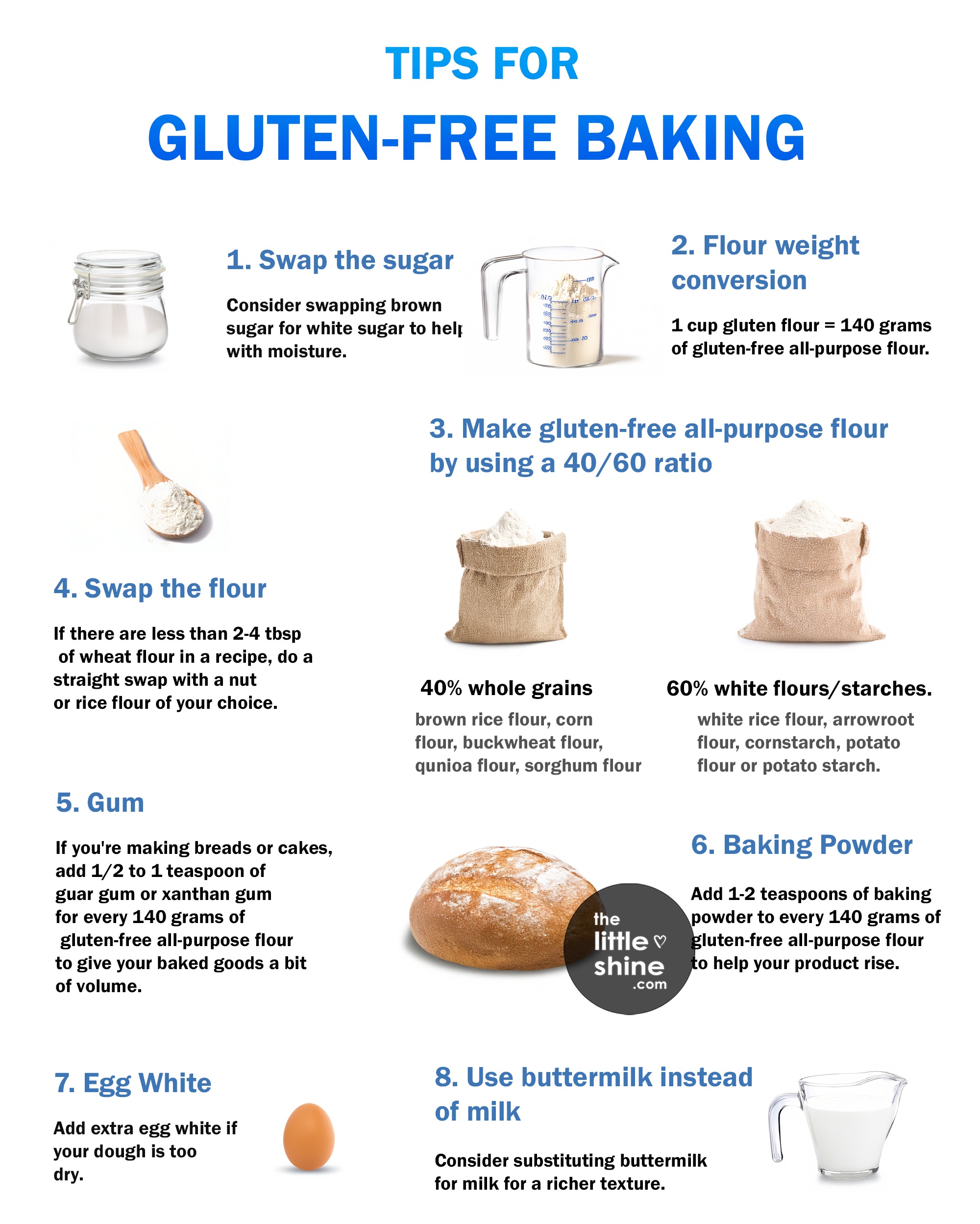Are you someone who is gluten-intolerant and feel like you’re missing out on a lot of baked goods because of this? Well, how about switch to gluten-free baking!
While some people can handle baked goods that contain gluten, some cannot digest it. Therefore, switching to gluten-free baking is a great idea.

In this article, let’s discuss some tips for gluten-free baking!
Tips for Gluten Free Baking
1. Swap the sugar
Consider swapping brown sugar for white sugar to help with moisture. This is because brown sugar can draw and absorb more liquid as compared to regular white sugar. Thus, using brown sugar in the recipe, in place of white sugar can help increase the moisture content in the item you’re baking and can make it more moist and chewy.
Nevertheless, it is essential to note that all types of sugar (including white sugar), are all gluiten-free and you could use any type of your choice.
2. Flour weight conversion
1 cup gluten flour = 140 grams of gluten-free all-purpose flour, this is a common flour weight conversion for gluten-free baking. You could also simply use the 1:1 ratio as well.
But remember that gluten-free flours many not be as absorbent and thus can make the item dry. Therefore, make sure to adjust the liquid ration, to increase moisture levels in the item you’re baking.
3. Make gluten-free all-purpose flour by using a 40/60 ratio
If there are more than 4 tablespoons to swap, you can create your own mix. All you need is – 40% whole grains (brown rice flour, buckwheat flour, corn flour, mesquite flower, quinoa flour, or sorghum flour) and 60% white flours/starches (white rice flour, arrowroot flour, cornstarch, potato flour, or potato starch).
4. Baking powder
Add 1-2 teaspoons of baking powder to every 140 grams of gluten-free all-purpose flour to help your product rise.
You could also make your own gluten-free flour at home. To make this self-rising flour, you will need to combine 12 grams of baking powder, with 250 grams of gluten-free flour and 2 grams of salt.
5. Swap the flour
If there are less than 2-4 tablespoons of wheat flour in a recipe, do a straight swap with a nut or rice flour of your choice.
For nut flours, you could you almond flour, walnut flour, coconut flour, peanut flour etc. As for rice flours, brown rice flour, white rice flour, tapioca flour, amaranth flour etc.
6. Use buttermilk instead of milk
Consider substituting buttermilk for milk for a richer texture. It can help not just enhance and add more flavour, but can also make the item more moist. It can help make the item rise better as well, because it reacts with the baking soda.
7. Use guar gum or xanthan gum to achieve volume
If you’re making breads or cakes, add 1/2 to 1 teaspoon of guar gum or xanthan gum for every 140 grams of gluten-free all-purpose flour to give your baked goods a bit of volume.
8. Add egg whites to increase dough moisture
You can add extra egg white if your dough is too dry before baking. Also, egg whites can help contribute to the texture of the baked item. The egg whites will replace the binding function of the gluten and will not let the item crumble because of dryness.
9. Lower the temperature while baking
Gluten-free goods tend to brown faster, but not bake faster, as compared to regular baked goods. Therefore, you could reduce the temperature and bake the products for 10 to 15 minutes longer.
This will help avoid the over-browning of the baked item, while making sure it is properly cooked all the way through.
10. Measure by weight not by cups
Whenever you are baking gluten-free products, always make sure to go by weight measurements and not by cup measurements to ensure accuracy.
